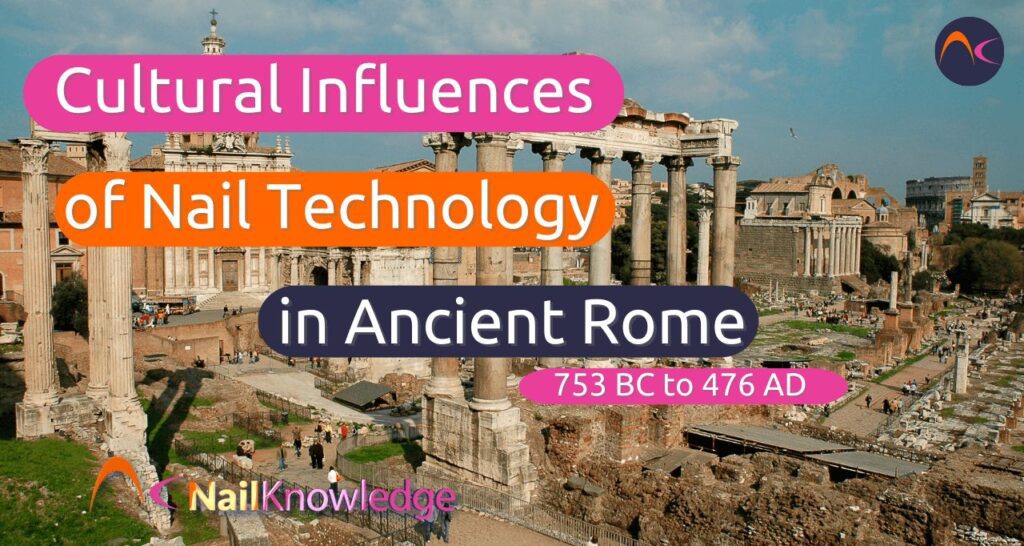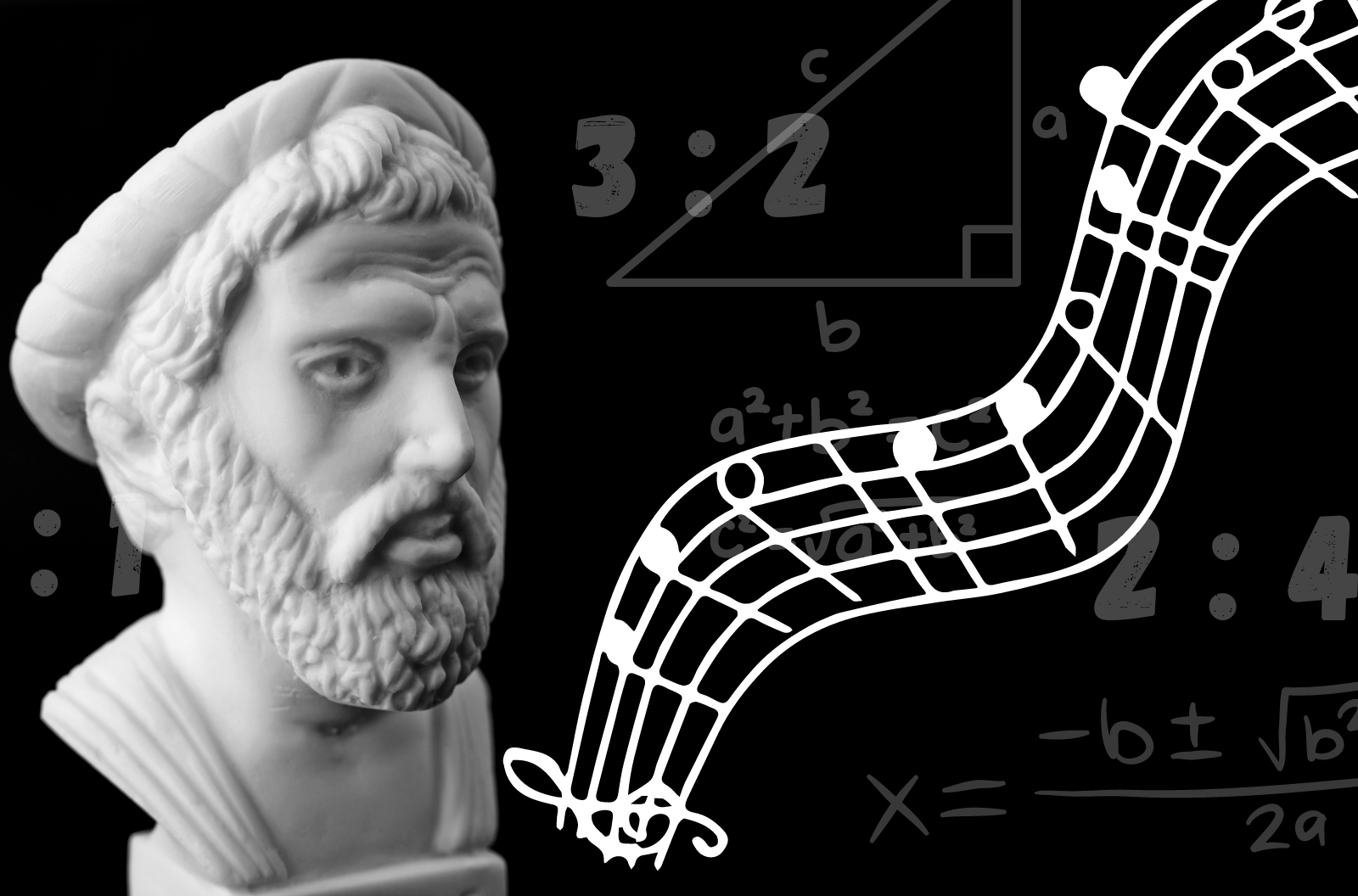Euclid: The Father of Geometry
Introduction to Euclid
Euclid, often referred to as the "Father of Geometry," was a Greek mathematician who lived around 300 BCE. His contributions to mathematics, particularly in the field of geometry, have had a profound and lasting impact on the discipline. Euclid's most famous work, "Elements," is a comprehensive compilation of mathematical knowledge from his time and remains one of the most influential textbooks ever written. Despite his monumental contributions, much of Euclid's personal life remains shrouded in mystery, with few details about his birthplace, family, or even his exact lifespan known to historians.
The Life and Times of Euclid
Euclid is believed to have lived during the reign of Ptolemy I Soter, the first ruler of the Ptolemaic dynasty in Egypt. He likely studied in Athens, where he was exposed to the works of earlier mathematicians such as Plato, Pythagoras, and Eudoxus. Euclid eventually settled in Alexandria, a thriving center of learning and scholarship in the ancient world. It was here that he established a school of mathematics and composed his seminal works.
While little is known about Euclid's personal life, anecdotes from ancient sources provide glimpses into his character. One famous story recounts how Ptolemy I asked Euclid if there was a shorter way to learn geometry than through the "Elements." Euclid reportedly replied, "There is no royal road to geometry," emphasizing the importance of rigorous study and logical reasoning. This anecdote highlights Euclid's dedication to the principles of mathematics and his belief in the value of systematic learning.
The Elements: Euclid's Masterpiece
Euclid's "Elements" is a monumental work consisting of 13 books that cover a wide range of mathematical topics, including plane geometry, number theory, and solid geometry. The "Elements" is not merely a collection of Euclid's own discoveries but also a synthesis of the mathematical knowledge of his predecessors. Euclid organized this knowledge into a coherent and logical framework, using a deductive system based on axioms, postulates, and propositions.
The first six books of the "Elements" focus on plane geometry, introducing fundamental concepts such as points, lines, angles, and circles. Euclid's axiomatic approach begins with a set of definitions, postulates, and common notions (or axioms) from which he derives all subsequent propositions. For example, his five postulates include the famous parallel postulate, which states that if a straight line falling on two straight lines makes the interior angles on the same side less than two right angles, the two straight lines, if produced indefinitely, will meet on that side. This postulate would later become the subject of much debate and lead to the development of non-Euclidean geometries in the 19th century.
Books VII through IX of the "Elements" delve into number theory, exploring topics such as prime numbers, divisibility, and the Euclidean algorithm for finding the greatest common divisor of two numbers. The Euclidean algorithm remains a fundamental tool in number theory and computer science to this day. Books X through XIII address more advanced geometric concepts, including irrational numbers, the properties of three-dimensional figures, and the construction of regular polyhedra.
Euclid's Influence on Mathematics
Euclid's "Elements" was not only a groundbreaking work in its own time but also served as the foundation for mathematical education for centuries. The logical structure and clarity of the "Elements" made it an ideal textbook, and it was widely studied in both the ancient and medieval worlds. The work was translated into Arabic during the Islamic Golden Age and later into Latin in Europe, where it became a cornerstone of Renaissance scholarship.
Euclid's axiomatic method influenced not only mathematics but also other fields such as philosophy and science. His approach to reasoning from first principles inspired thinkers like Isaac Newton, who modeled his "Principia Mathematica" on Euclid's deductive framework. The "Elements" also played a crucial role in the development of modern mathematics, providing a model for the rigorous proofs and logical consistency that define the discipline today.
Beyond the Elements: Other Works by Euclid
While the "Elements" is Euclid's most famous work, he authored several other treatises on mathematics and science. These include "Data," a collection of geometric propositions; "On Divisions of Figures," which explores the division of geometric shapes into equal parts; and "Phaenomena," a work on spherical astronomy. Euclid also wrote "Optics," one of the earliest surviving works on the subject, which examines the geometry of vision and the properties of light.
Although many of these works have been lost or survive only in fragments, they demonstrate the breadth of Euclid's intellectual interests and his contributions to various branches of knowledge. His ability to apply geometric principles to diverse fields underscores the versatility and universality of his mathematical approach.
Euclid's Legacy
Euclid's influence extends far beyond the realm of mathematics. His work laid the groundwork for the scientific method, emphasizing the importance of logical deduction and proof. The "Elements" has been studied by countless students and scholars over the centuries, and its impact can be seen in the development of modern mathematics, physics, and engineering.
In the modern era, Euclid's name has been immortalized in various ways. The Euclidean algorithm, Euclidean geometry, and Euclidean space are all terms derived from his work. His legacy continues to inspire mathematicians and scientists, reminding us of the enduring power of clear thinking and systematic reasoning. Euclid's "Elements" remains a testament to the beauty and elegance of mathematics, a timeless masterpiece that continues to shape our understanding of the world. The Mathematical Legacy of Euclid
Euclid's Influence on Modern Mathematics
Euclid's contributions to mathematics extend far beyond the "Elements." His work laid the foundation for many mathematical disciplines, including algebra, number theory, and geometry. His axiomatic approach, which relies on logical deduction from fundamental principles, has become the standard for mathematical reasoning. Mathematicians today still use his methods to develop new theories and solve complex problems.
One of Euclid's most significant contributions is the concept of proof. Before Euclid, mathematical knowledge was often based on empirical observations and practical applications. Euclid introduced the idea that mathematical truths must be logically derived from axioms and postulates. This shift transformed mathematics from a collection of useful techniques into a rigorous intellectual discipline.
The Impact of Euclidean Geometry
Erich von Dürer, Johannes Kepler, and Galileo Galilei all built upon Euclid’s geometric principles. Euclidean geometry, which describes the properties of flat, two-dimensional space, was the dominant mathematical framework for centuries. It was not until the 19th century that mathematicians like Carl Friedrich Gauss and Bernhard Riemann began exploring non-Euclidean geometries, which describe curved spaces.
Despite the development of these alternative geometries, Euclid’s work remains essential. Engineers, architects, and physicists still rely on Euclidean principles for designing structures, calculating distances, and modeling physical phenomena. The Pythagorean theorem, for example, is a fundamental tool in trigonometry and physics, used in everything from navigation to quantum mechanics.
Euclid’s Role in Number Theory
Euclid’s work in number theory was equally groundbreaking. His proof of the infinitude of prime numbers is one of the most elegant in mathematics. He demonstrated that there is no largest prime by showing that if a finite list of primes exists, one can always find a new prime not on that list. This proof remains a cornerstone of number theory and has inspired countless mathematical discoveries.
The Euclidean algorithm, another of his contributions, is still used today in computer science for efficient computation of the greatest common divisor (GCD). Cryptography, particularly in algorithms like RSA encryption, relies on the principles of prime numbers and modular arithmetic, both of which trace their roots back to Euclid.
Euclid’s Influence on Philosophy and Science
Beyond mathematics, Euclid’s logical framework influenced philosophers such as René Descartes and Immanuel Kant. Descartes’ "Discourse on Method" was inspired by Euclid’s structured reasoning, while Kant’s "Critique of Pure Reason" drew parallels between Euclidean geometry and human perception of space.
In physics, Isaac Newton’s "Principia Mathematica" adopted Euclid’s axiomatic method to formulate the laws of motion and universal gravitation. Albert Einstein, too, acknowledged Euclid’s influence, though his theory of general relativity ultimately required a non-Euclidean geometric framework to describe spacetime curvature.
The Enduring Relevance of Euclid’s Work
Euclid’s "Elements" has been translated into numerous languages and remains a key text in mathematical education. Modern editions often include commentary and additional proofs, but the original structure and logic remain intact. Many universities still teach Euclidean geometry as an introduction to mathematical reasoning, emphasizing its clarity and elegance.
In the digital age, Euclid’s algorithms are implemented in computer programs, ensuring their continued relevance. His influence is evident in fields as diverse as artificial intelligence, where geometric methods are used in machine learning, and robotics, where Euclidean space is fundamental to motion planning.
Conclusion
Euclid’s legacy is not merely historical—it is alive in the way we think, reason, and solve problems. His work has shaped mathematics, science, and philosophy for over two millennia, and its impact continues to grow. As new mathematical discoveries emerge, they often build upon the foundation that Euclid laid. His name remains synonymous with logical clarity, precision, and the timeless beauty of mathematics.
The Third Part: Euclid’s Influence on Education and Modern Science
Euclid in the Classroom
For centuries, Euclid’s "Elements" was the standard textbook for teaching geometry. Students from ancient Greece to the Renaissance learned mathematics by studying his proofs and solving problems based on his methods. Even today, many educational systems introduce geometry through a Euclidean lens, teaching students to reason deductively and construct rigorous arguments.
The Socratic method, which emphasizes questioning and dialogue, aligns well with Euclid’s approach. Teachers often use his propositions to encourage students to think critically and develop their own proofs. This pedagogical tradition has helped cultivate generations of mathematicians, scientists, and engineers.
Euclid and the Scientific Revolution
The Scientific Revolution of the 16th and 17th centuries was deeply influenced by Euclid’s logical framework. Figures like Nicolaus Copernicus, Johannes Kepler, and Galileo Galilei applied geometric reasoning to astronomy, leading to groundbreaking discoveries about the solar system. Kepler’s laws of planetary motion, for example, relied on Euclidean geometry to describe the orbits of planets.
Galileo famously declared that the universe is "written in the language of mathematics," echoing Euclid’s belief in the power of mathematical abstraction. This perspective became central to modern science, where mathematical models are used to predict natural phenomena.
Euclid’s Impact on Computer Science
In the 20th and 21st centuries, Euclid’s algorithms have found new life in computer science. The Euclidean algorithm is used in cryptography, error-correcting codes, and data compression. His geometric methods are applied in computer graphics, where shapes and spaces are rendered using vector mathematics.
Machine learning algorithms, particularly those involving clustering and classification, often rely on Euclidean distance as a measure of similarity. Robotics and computer vision use Euclidean transformations to navigate and interpret three-dimensional space.
The Future of Euclidean Thought
As mathematics and science continue to evolve, Euclid’s principles remain a touchstone. While non-Euclidean geometries and abstract algebra have expanded the scope of mathematical inquiry, the clarity and rigor of Euclidean reasoning still serve as a model for intellectual discipline.
New generations of mathematicians and scientists will continue to build on Euclid’s work, proving that his legacy is not confined to history but is a living, evolving tradition. His name will forever be associated with the pursuit of truth through reason, logic, and the beauty of mathematical thought.
Final Thoughts
Euclid’s influence spans millennia, shaping the way we understand the world. His work is a testament to the power of human intellect and the enduring value of structured reasoning. Whether in the classroom, the laboratory, or the digital realm, Euclid’s ideas continue to inspire, challenge, and illuminate the path to knowledge.
Euclid's Enduring Methodological Legacy
The methodological framework established by Euclid represents perhaps his most significant contribution to human thought. His systematic organization of geometric knowledge, proceeding from simple axioms to complex proofs, established an intellectual paradigm that transformed how humans approach not just mathematics, but all rigorous disciplines. This model of building knowledge through deductive reasoning became the gold standard for intellectual pursuits across cultures and centuries.
Historians of science point to Euclid's method as the first fully realized example of what we now recognize as the scientific method. The structured progression from definitions to postulates to propositions created a template for logical exposition that influenced fields as diverse as legal reasoning, theological argumentation, and later, experimental science. The very notion that complex truths could be derived from simple, self-evident principles revolutionized human cognition.
Euclid and the Development of Modern Science
The emergence of modern science in the 17th century cannot be understood without appreciating Euclid's foundational influence. When Galileo sought to mathematize physics, when Newton formulated his laws of motion, they consciously modeled their works on Euclidean structure. The famous "Principia Mathematica" by Newton intentionally mirrored the organizational framework of "Elements," demonstrating how thoroughly Euclid's approach had become synonymous with rigorous thought.
Interestingly, the eventual development of non-Euclidean geometries in the 19th century - often seen as breaking from Euclidean tradition - actually confirmed the power of his method. Mathematicians like Gauss, Lobachevsky, and Riemann began by carefully examining Euclid's parallel postulate, using the same rigorous approach Euclid himself had established. This demonstrates that even in transcending Euclidean geometry, modern mathematics remained fundamentally Euclidean in method.
The Psychological Impact of Euclidean Reasoning
Cognitive scientists have studied how exposure to Euclidean geometry shapes human thinking patterns. The mental discipline required to follow and construct geometric proofs develops specific cognitive skills - the ability to see logical relationships, to identify necessary and sufficient conditions, and to think in abstract hierarchies. Some educators argue that this explains why Euclidean geometry has remained in curricula long after its practical applications might suggest it should be replaced.
Neuroscientific research suggests that training in Euclidean geometry activates and strengthens specific neural pathways associated with spatial reasoning and abstract thought. The mental "Aha!" moment when a geometric proof suddenly becomes clear may represent a fundamental cognitive breakthrough that generalizes to other domains of problem-solving.
Euclid in the Digital Age
In our computer-dominated era, Euclidean principles have found surprising new applications. Computer graphics rely heavily on Euclidean transformations, with every 3D rendering in video games or CGI films fundamentally based on extensions of Euclid's geometry. The development of CAD (Computer-Aided Design) systems and computer vision algorithms continues to depend on Euclidean concepts, proving their enduring utility in our technological landscape.
Moreover, the current explosion of interest in artificial intelligence and machine learning has brought renewed attention to Euclidean space as a framework for organizing and processing information. High-dimensional vector spaces - crucial to modern AI systems - are mathematical generalizations of the three-dimensional Euclidean space familiar to geometry students.
Euclidean Aesthetics and Cultural Influence
Beyond mathematics and science, Euclidean geometry has profoundly influenced art and architecture across civilizations. The golden ratio, first rigorously studied by Euclid, has informed artistic composition from Renaissance paintings to modern design. The clean lines and perfect proportions of classical architecture reflect Euclidean ideals, while contemporary architects still use Euclidean constructions in their creative processes.
The very language we use to describe intellectual pursuits is saturated with Euclidean metaphors - we talk about "constructing arguments," "lines of reasoning," and "geometric growth." This linguistic legacy demonstrates how deeply Euclid's mode of thinking has penetrated human consciousness.
Challenges to Euclidean Primacy
While celebrating Euclid's monumental achievements, we must acknowledge the limitations of his system. The realization that other consistent geometries exist challenged the notion of Euclidean absolute truth. Modern physics has shown that at cosmic and quantum scales, reality appears decidedly non-Euclidean. Yet remarkably, these discoveries were made possible by the very intellectual tools Euclid helped create.
Some modern educators question whether Euclidean geometry should maintain its privileged position in mathematics education, arguing that other branches of mathematics might better serve contemporary needs. However, the debate itself is conducted using logical structures that owe much to Euclid's original approach.
The Philosophical Dimensions of Euclid's Work
Philosophers have long grappled with the implications of Euclidean thought. Plato's theory of forms finds a mathematical counterpart in Euclid's ideal geometric figures. Kant's conception of a priori knowledge drew heavily on the apparent self-evidence of Euclidean axioms. The 20th century's philosophical debates about the nature of mathematical truth largely revolved around how to interpret Euclidean foundations.
Euclid's work also raises profound questions about the relationship between mathematics and physical reality. His geometry was originally conceived as an abstract description of physical space, yet it has proven both immensely useful in practical applications and ultimately limited in describing the universe's true nature. This tension continues to inspire philosophical inquiry into the status of mathematical knowledge.
Euclid's Future Legacy
As we move further into the 21st century, Euclid's influence shows no signs of waning. New mathematical fields continue to emerge that, while far more abstract than ancient Greek geometry, still bear the imprint of Euclidean methodology. The development of proof assistants and formal verification in computer science represents a surprising digital continuation of Euclid's commitment to rigorous demonstration.
Perhaps most importantly, Euclid established mathematics as a living tradition - one where each generation builds carefully on the work of its predecessors. The collaborative, cumulative nature of modern mathematics, where scholars worldwide work within a shared framework of definitions and methods, can trace its lineage directly back to Euclid's groundbreaking example.
Final Reflection
Contemplating Euclid's legacy, we recognize that his true greatness lies not in any single theorem or proof, but in establishing mathematics as a self-contained intellectual universe governed by reason. His work demonstrated that the human mind could apprehend eternal truths through pure thought, independent of empirical observation. This radical idea has shaped two millennia of intellectual history and continues to inspire those who seek truth through reason.
As we stand at what may be the dawn of new mathematical revolutions - perhaps involving quantum computing, artificial intelligence, or as-yet undiscovered branches of mathematics - we do so equipped with conceptual tools forged in ancient Alexandria. Euclid's geometry remains a touchstone of human intellectual achievement, a testament to our species' capacity to comprehend the fundamental structures of reality through disciplined thought. In honoring Euclid, we celebrate not just one remarkable thinker, but the very possibility of systematic human understanding.

























Comments